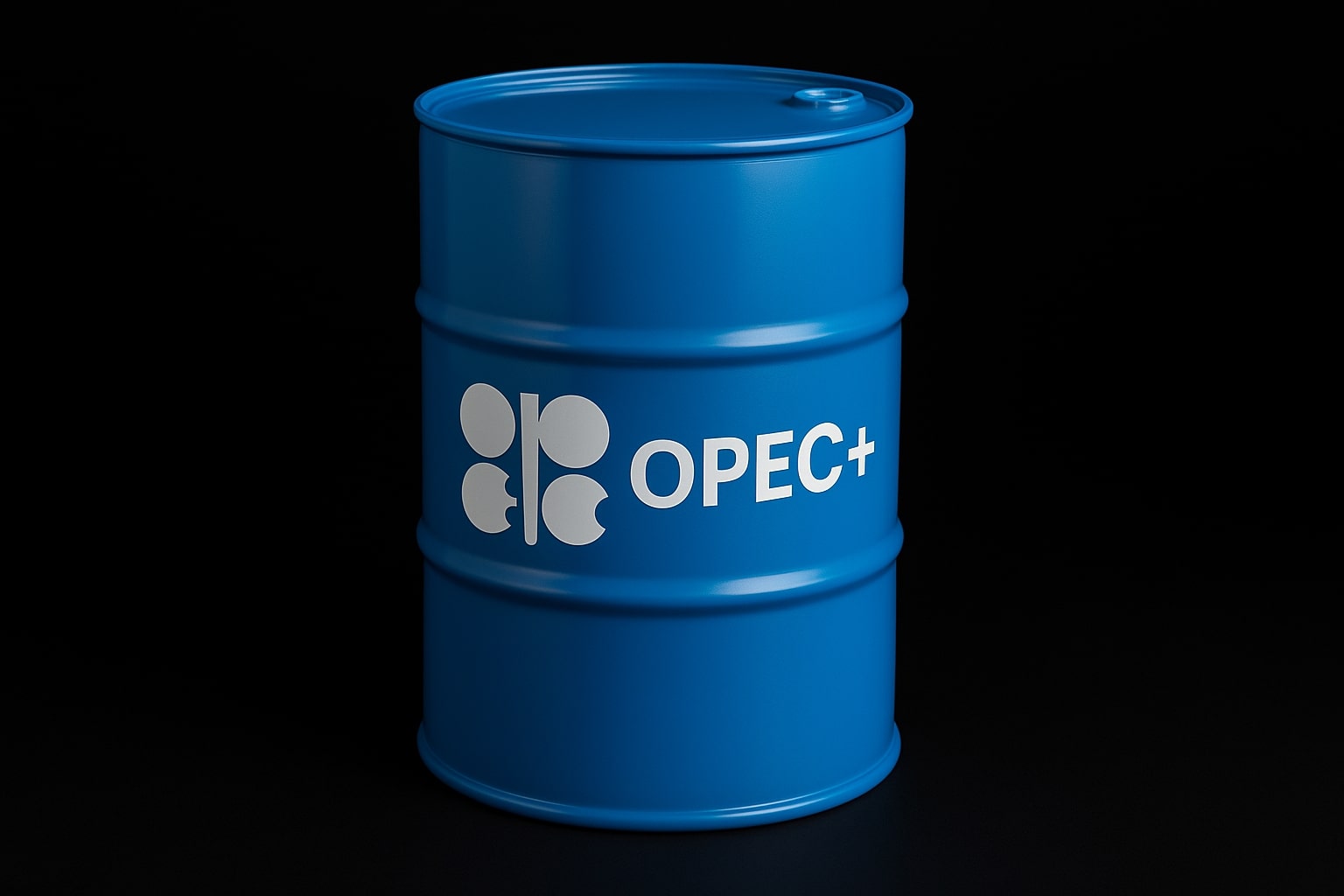Oil Prices Face Challenges Amid OPEC+ Production Increases and Economic Slowdown
Oil prices in 2025 have been significantly impacted by a combination of increasing production from OPEC+ and a looming global recession. This has led to a sharp drop in oil prices, with Brent crude oil futures falling to $60.05 per barrel, while WTI crude (CL=F) dipped to $56.59 per barrel. These declines reflect the ongoing struggles within the oil market, as both supply-side and demand-side factors play a crucial role in shaping price dynamics.
OPEC+ Decision to Surge Production: What Will It Mean for Future Oil Prices?
In a surprising move, OPEC+ has agreed to raise production by 411,000 barrels per day in June, following a similar increase in May. This production surge, nearly three times the amount initially anticipated by analysts, is expected to further weigh on oil prices, which have already fallen sharply in 2025. The decision to increase production amidst concerns over oversupply and a potential global recession only intensifies the bearish outlook for oil prices in the short term. With the broader global economic uncertainty, this move is likely to place additional downward pressure on prices.
Impact of U.S. Tariffs and Economic Slowdown on Oil Prices
U.S. trade policies, particularly under President Donald Trump’s administration, have added significant complexity to the oil market. The imposition of high tariffs, including a 145% tariff on Chinese oil imports, has raised fears of a recession, which could negatively impact global oil demand just as OPEC+ ramps up production. The U.S. economy contracted by 0.3% in the first quarter of 2025, heightening concerns about further weakness in demand. While the U.S. labor market remains relatively stable, with 177,000 jobs added in April 2025, the broader economic uncertainty continues to weigh heavily on the outlook for oil demand.
Saudi Arabia's Strategic Role: Will Lower Oil Prices Be Tolerated?
Saudi Arabia, as the largest oil producer within OPEC, holds significant influence over global oil prices. Despite the current drop in oil prices, the kingdom is in a strong financial position to weather the downturn, thanks to its foreign exchange reserves and sovereign debt options. Saudi Arabia's ability to produce oil at low costs gives it an advantage in maintaining its market share. Moreover, its Vision 2030 plan, which includes diversifying into manufacturing, further supports the kingdom’s economic resilience in the face of low oil prices. However, this strategic diversification also highlights the country’s long-term goal of reducing its reliance on oil revenues.
OPEC+ Output Increases and Their Impact on Oil Supply
The decision by OPEC+ to continue increasing production has set the stage for an oversupplied oil market. With production rising by a total of 411,000 barrels per day in both May and June, OPEC+ is compensating for the failure of some member states, such as Kazakhstan, to meet their output targets. The increase in supply from OPEC+ comes at a time when oil prices are already hovering near a four-year low, and concerns about oversupply persist. As OPEC+ continues to flood the market with oil, the risks of a prolonged price slump increase.
The Rising Rivalry Between U.S. Oil and OPEC+: Can Market Share Be Maintained?
The rivalry between OPEC+ and non-OPEC producers, particularly the United States, is escalating. U.S. shale production has surged, making the U.S. a key player in global oil supply. OPEC+ has responded by adjusting its production to maintain market share and stabilize prices. However, as U.S. production continues to increase, OPEC+ faces an ongoing challenge in balancing supply and demand without causing significant harm to its member economies. This dynamic presents an ongoing challenge for OPEC+ as it navigates the complexities of a global oil market with increasing competition from non-OPEC producers.
Oil Price Predictions: Will WTI and Brent Prices Recover or Fall Further?
Given the recent surge in production from OPEC+ and the ongoing economic uncertainties, analysts are forecasting continued pressure on oil prices. For WTI crude (CL=F) and Brent, this suggests that the $60 per barrel mark could act as a ceiling for the short term. If the economic slowdown continues and demand for oil remains weak, oil prices may continue to struggle in the near future. Goldman Sachs has adjusted its price forecasts, anticipating that oil prices will not see a significant rebound unless there is a major shift in economic conditions.
Geopolitical Risks and Their Impact on Oil Supply
Geopolitical risks remain a key factor influencing oil prices. Saudi Arabia’s strategic investments in manufacturing and mining are part of a broader effort to reduce its dependence on oil revenues, but these efforts come with their own risks. Tensions in the Middle East, especially related to trade disputes and instability in Iran, continue to affect oil markets. Additionally, the global shift towards renewable energy poses a long-term risk to oil demand. If renewable technologies continue to advance, the future of oil as a dominant energy source could be at risk, further complicating the market outlook.
WTI and Brent Prices: Can We Expect a Reversal or More Declines?
Currently, both WTI crude (CL=F) and Brent crude are under significant pressure, trading at $56.59 and $60.05 per barrel, respectively. This marks a notable decline from previous highs, with both benchmarks down more than 20% in 2025. The ongoing supply increases from OPEC+ and weak demand projections make a sharp recovery seem unlikely in the short term. The imbalance between supply and demand is likely to persist, weighing on prices for the foreseeable future.
The Real Impact of Tariffs on Oil Producers: What’s Next?
The imposition of tariffs on oil imports, particularly from China, has had a profound impact on global oil markets. Retaliatory tariffs from Beijing have complicated the market dynamics, and as the U.S. economy shows signs of slowing, the outlook for oil demand becomes more uncertain. Producers, facing lower prices and rising costs, are navigating a challenging environment. The continued uncertainty surrounding tariffs and trade policies makes it difficult to predict how oil prices will evolve in the coming months.
Weakness in Oil Exploration Investment: A Long-Term Concern?
Major oilfield service companies like Baker Hughes and SLB have reported a decline in investments in oil exploration and production, signaling a potential long-term downturn in the sector. Despite the underlying demand for oil, economic uncertainties, coupled with tariffs and geopolitical risks, have led to reduced upstream spending. As oil prices remain low, exploration and production companies may further scale back their investments, leading to a tightening of future oil supply and exacerbating market imbalances.
The current state of the oil market reflects a challenging period for both producers and consumers. With OPEC+’s aggressive production increases and continued geopolitical and economic uncertainty, the outlook for oil prices remains bearish. With both WTI and Brent prices under pressure and showing limited signs of recovery, the immediate future for oil prices is marked by continued volatility and risk.




















